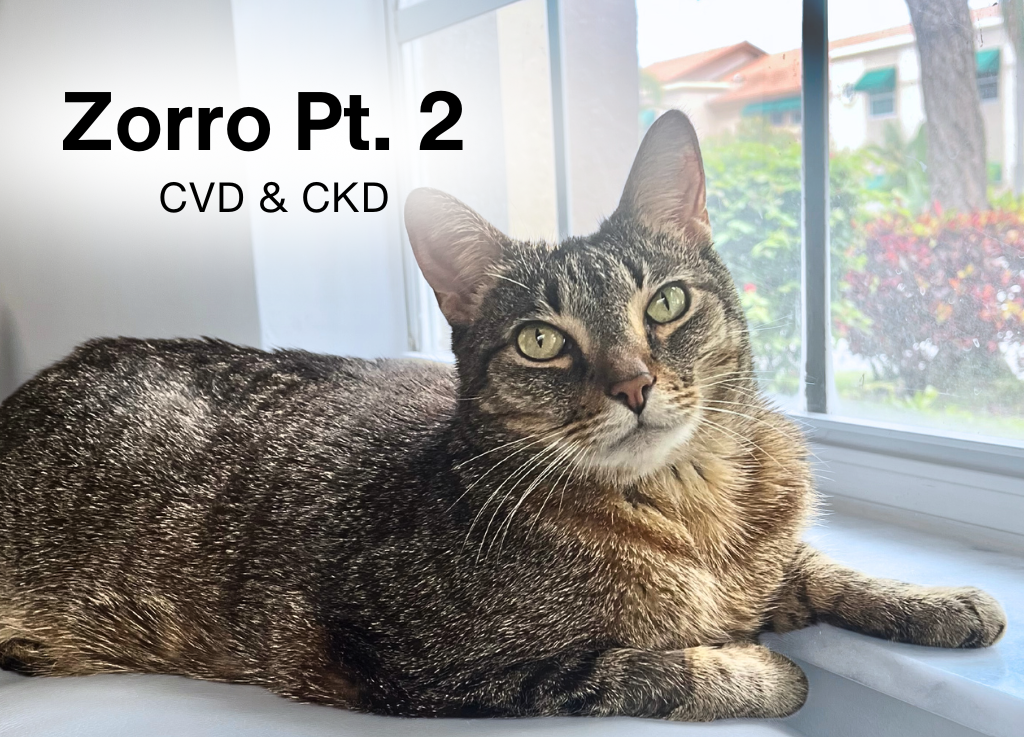Part II: Full Recovery, Cardiovascular Normalization and Prevention
From Crisis to Recovery
In Part I, we shared how Zorro, a 6.5-year old feline patient with cardiovascular disease (CVD in cats), suffered an acute kidney injury (AKI in cats) during June–July 2025. His decline was the result of multiple overlapping stressors:
- Chronic hypokalemia in cats, which likely contributed to his cardiovascular disease
- Proteinuria in cats leading to feline edema (pleural effusion and pulmonary edema)
- The use of a loop diuretic to treat fluid buildup, which inadvertently worsened kidney stress in cats
By late June, Zorro’s health was failing. Yet, within just a few weeks, his kidneys had fully recovered. As confirmed by his July 15th bloodwork, the turning point came after shifting to Bloom Bioscience’s feline nutraceutical protocol: Hydro-Life (for hydration and cat potassium supplementation), Revita-Life (for cardiovascular and kidney support in cats), and Rutin-Cat (to help manage pleural effusion).
Read Part I of Zorro’s Case Study
Cardiovascular Stability Restored
Zorro’s underlying CVD in cats, likely early-stage dilated cardiomyopathy (DCM), had driven much of his initial decline. By his June 25, 2025 cardiology evaluation (Sawgrass Veterinary Cardiology, Boynton Beach), his feline cardiac biomarkers painted a troubling picture:
- fTnI = 1.7 ng/mL (10x above normal, indicating myocardial injury in cats)
- f.NT-proBNP = 301 pmol/L (elevated, reflecting cat heart stress)
After discontinuing all prescription medications on July 4 and transitioning solely to Bloom nutraceuticals for cats, his cardiovascular markers steadily improved. At his September 24, 2025 cardiology recheck (Sawgrass Veterinary Cardiology, Boynton Beach), Zorro’s tests were dramatic in their improvement:
- fTnI < 0.01 ng/mL (normalized, no myocardial injury)
- f.NT-proBNP < 50 pmol/L (ideal, well within reference range)
Independent Verification
All cardiac testing was performed by Sawgrass Veterinary Cardiology (Boynton Beach, FL), confirming Zorro’s cardiovascular recovery was measurable and specialist-verified.
Learn more about feline cardiac biomarkers
Potassium Balance and Edema Resolution
Low potassium was a hidden driver of Zorro’s cardiac and renal stress in cats. With Hydro-Life’s bioavailable potassium support, his potassium values normalized and have remained stable.
At the same time, feline edema, a hallmark of his earlier decline, resolved completely. The combined action of Hydro-Life (restoring cat electrolyte balance), Revita-Life (improving vascular and cellular health in cats), and Rutin-Cat (supporting lymphatic clearance) prevented recurrence of pleural effusion or pulmonary edema.
“Hydro-Life stabilized Zorro’s potassium and eliminated edema — no more pleural effusion or pulmonary fluid buildup in this cat.”
Hydro-Life product page | Revita-Life product page
Dermatologic Symptoms: Treating the Root Cause
Before Bloom supplements, Zorro also suffered from incessant itching, bald spots, and fur loss in cats. His veterinarian prescribed medications and topical therapies, but these failed to resolve the problem.
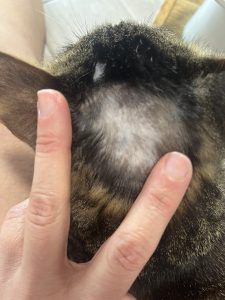 Zorro-July 1, 2025
Zorro-July 1, 2025
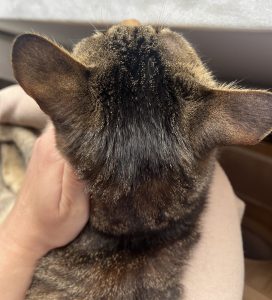 Zorro-September 26, 2025
Zorro-September 26, 2025
Zorro’s incessant itching and bald spots were actually early warning signs of serious underlying health issues, manifestations of his cardiovascular and kidney disease. These minor symptoms are often ignored or simply treated topically, with little effect.
Instead of adding more medications or supplements, we followed a “less is more” approach. We classified these dermatologic issues as secondary symptoms and focused on treating the root cause with Bloom’s nutraceutical protocol. Within weeks, Zorro’s itching subsided and his coat regrew naturally.
This principle applies to other secondary symptoms as well, such as hyper/hypothyroidism or Type 2 diabetes in cats. When the underlying systemic imbalance is corrected, these issues may resolve themselves, avoiding a lifetime of unnecessary medications.
“By addressing the root cause rather than masking symptoms, Zorro’s dermatologic issues resolved naturally — proof that sometimes, less truly is more.”
The Financial Impact
| CONVENTIONAL VETERINARY CARE | BLOOM NUTRACEUTICAL CARE |
|---|---|
| – 3 primary vet visits | – Hydro-Life + Revita-Life + Rutin-Cat |
| – 2 emergency visits | |
| – diagnostics, medications, diuretics | |
| – hospitalizations | |
| – follow-up cardiology ($856) | |
| Total cost: $12,156 | Total cost: $148 (5-month supply) |
Zorro’s journey underscores the economic as well as medical difference between conventional and nutraceutical care:
Conventional veterinary care (May–July 2025): 3 primary vet visits, 2 emergency visits, diagnostics, medications, diuretics, hospitalizations — Total: $11,300
Follow-up cardiology (September 25, 2025): specialist recheck + diagnostics — Additional $856
Bloom nutraceutical care (5-month supply): Hydro-Life + Revita-Life + Rutin-Cat — Total: $148
“From $12,156 in vet bills to just $148 in nutraceuticals — Bloom restored Zorro’s health at a fraction of the cost.”
Reinforcing Bloom’s Teachings

Zorro’s recovery illustrates the principles in Bloom’s CKD Meets Heart Disease: The Hidden Threat to Feline Health — and the Simple Supplements That Help. Chronic kidney disease (CKD) and heart disease share the same root cause in cats. Treating one impacts the other.
“Kidney disease and heart disease share the same root cause. Whether you’re treating one or both, Bloom’s Hydro-Life and Revita-Life are the solution — for support and prevention in cats.”
Learn more about CKD & Heart Disease in Cats
Final Thoughts
Zorro’s story highlights a simple but profound truth: with the right support, even complex conditions can reverse course. Focusing on electrolyte balance, vascular integrity, and systemic cellular health, Bloom nutraceuticals restored Zorro’s wellbeing.
With Hydro-Life, Revita-Life, and Rutin-Cat, Zorro transitioned from critical decline to full recovery — proving that nutraceutical care for cats can be effective, sustainable, and affordable.
